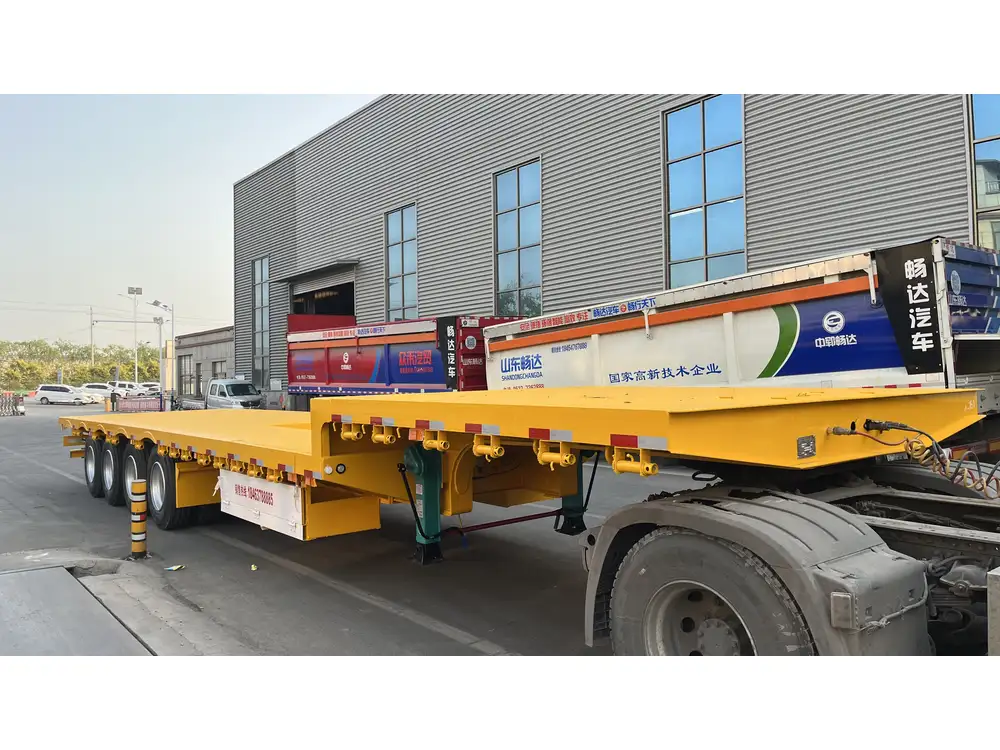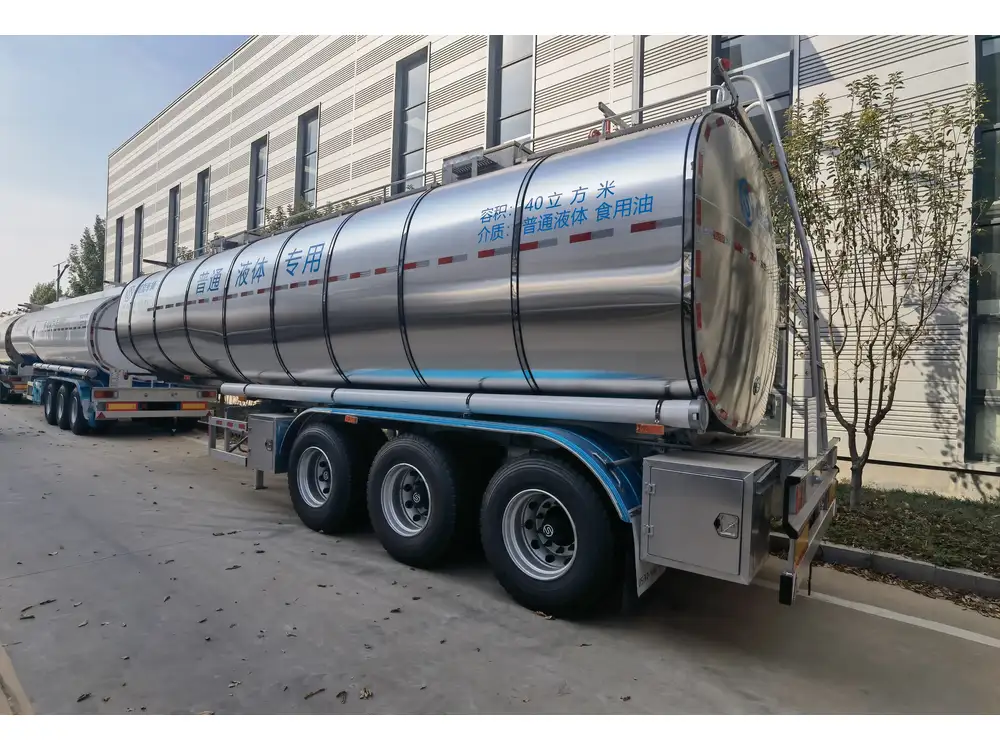What is a Semi-Trailer Truck?
A semi-trailer truck, often referred to simply as a semi or an articulated lorry, is a combination of a tractor unit and one or more semi-trailers. These vehicles play a pivotal role in the logistics and transportation industries, primarily designed to haul freight over long distances. The unique design of a semi-trailer truck allows it to carry large volumes of goods efficiently, making it an indispensable asset for businesses involved in shipping and delivery.
Key Components of a Semi-Trailer Truck
Tractor Unit: The front part of the truck, which houses the engine and driver’s cabin. This section is often referred to as the “cab” and is responsible for powering the vehicle and towing the trailer.
Semi-Trailer: Attached to the tractor unit, the semi-trailer lacks a front axle, relying instead on the tractor for support. This design provides the trailer with a low center of gravity, enhancing stability during transport.
Fifth Wheel Coupling: This critical component connects the tractor unit to the semi-trailer. It allows for a pivot point, enabling improved maneuverability and turn radii.
Cargo Area: The enclosed or flatbed area of the semi-trailer where goods are loaded. Depending on the cargo type, trailers may vary in design (e.g., dry van, refrigerated, flatbed).
Axles and Wheels: Support the weight of the trailer and its cargo. The number and configuration of axles can vary, influencing payload capacity and trailer stability.

The Role of Semi-Trailer Trucks in Modern Logistics
Semi-trailer trucks form the backbone of supply chain operations in numerous industries, including:
- Retail: Delivering goods from warehouses to retail locations.
- Manufacturing: Transporting raw materials to factories.
- Agriculture: Moving agricultural products from farms to markets.
- Construction: Carrying heavy equipment and materials to job sites.
The versatility of semi-trailer trucks makes them suitable for a wide range of applications. Various types of semi-trailers cater to specific transport needs, such as flatbeds for construction materials or refrigerated trailers for perishables.
Types of Semi-Trailer Trucks
Semi-trailer trucks come in many variants, each designed for specific logistical challenges. Here’s an overview of the most common types:
| Type | Description | Common Uses |
|---|---|---|
| Dry Van | Enclosed trailer offering protection from the elements. | General goods, freight shipments |
| Reefer | Refrigerated trailer maintaining temperature-controlled environments. | Perishable goods, pharmaceuticals |
| Flatbed | Open trailer with no sides or roof, allowing easy loading from multiple angles. | Construction materials, machinery |
| Tanker | Designed for carrying liquids such as chemicals or fuels. | Fuel delivery, chemical transport |
| Lowboy | Low-profile trailer used for transporting heavy equipment. | Heavy machinery transport |
| Step Deck | Similar to the flatbed but with a lower deck for taller loads. | Oversized cargo transport |
Advantages of Semi-Trailer Trucks

1. High Loading Capacity
Semi-trailers boast impressive cargo capacities, accommodating lighter, bulkier freight as opposed to standard truck beds. This characteristic optimizes logistics management, allowing companies to minimize the number of trips required for transportation.
2. Flexibility and Versatility
Designed to handle a variety of cargo types, semi-trailers can be easily swapped out, depending on the transporting requirements. For instance, a logistics company can switch between a dry van for standard cargo and a reefer for temperature-sensitive goods without needing a completely new truck.
3. Cost-Effective Transport
Transporting goods via semi-trailer trucks often proves more economical over long distances compared to smaller trucks. Their larger capacities mean lower costs per unit of freight, making them an attractive option for businesses looking to optimize shipping expenses.

4. Enhanced Maneuverability
Thanks to the fifth-wheel coupling, semi-trailer trucks can navigate tight corners and complex road networks more efficiently compared to rigid trucks. This is critical when transporting goods in urban environments or areas with narrow streets.
The Challenges of Utilizing Semi-Trailer Trucks
While semi-trailer trucks offer numerous advantages, they are not without their challenges. Understanding these issues can help mitigate risks:
1. Driver Shortages
The trucking industry has been grappling with a significant driver shortage, affecting the overall efficiency and reliability of freight delivery. Each truck requires a licensed driver, and finding qualified professionals can be a challenge.

2. Maintenance Costs
The maintenance of semi-trailer trucks can be costly, particularly when factoring in wear and tear on engines, tires, and other critical components. Regular inspections and adherence to servicing schedules are essential to minimize unforeseen breakdowns.
3. Regulatory Compliance
Navigating the myriad of regulatory requirements imposed on the trucking industry can be daunting. Trucking companies must ensure they meet safety, weight, and operational regulations, which may vary by state or country.
4. Environmental Impact
The environmental footprint of semi-trailer trucks is a growing concern. As fuel prices fluctuate and sustainability becomes a focal point, the industry faces pressure to adopt greener practices, including fuel-efficient technologies and alternative energy sources.

Semi-Trailer Truck Safety Considerations
Safety is paramount in the operation of semi-trailer trucks. Companies must prioritize the following aspects:
Driver Training
Investing in comprehensive driver training programs is crucial to ensure that operators are well-versed in handling the complexities associated with driving large vehicles. This training should include:
- Defensive driving techniques
- Load management and securing freight
- Understanding of regulations and road laws
Regular Inspections and Maintenance
Establishing a rigorous inspection schedule allows for early identification of issues, preventing potential accidents. Key areas for regular checks include:
- Braking systems
- Tire conditions
- Lights and visibility equipment

Load Security
Ensuring that cargo is properly secured can mitigate the risks of spillages and accidents on the road. Various fastening techniques and materials (like straps, chains, and tarps) should be employed based on the cargo type.
Vehicle Technology Advancements
Investing in advanced technology can significantly enhance safety protocols. Features such as:
- Collision prevention systems
- Lane-keeping assist
- Advanced braking systems
can serve as additional safety measures for semi-trailer trucks.
The Future of Semi-Trailer Trucks

1. Automation and Robotics
With advancements in technology, automation is gradually making its way into the trucking industry. The adoption of autonomous driving technologies could revolutionize operations, potentially alleviating issues linked to driver shortages and increasing safety.
2. Sustainability Practices
As global awareness of environmental concerns rises, the trucking industry is expected to see a shift toward more sustainable practices. Innovations may include electric and hybrid semi-trailer trucks, alternative fuel options, and optimizing routes to reduce operational emissions.
3. Data-Driven Logistics
Big data and analytics are becoming crucial in optimizing freight transport. Monitoring real-time data on logistics can facilitate better route planning, enhance load management, and overall efficiency in transport operations.

4. Telematics and Connectivity
The integration of telematics into semi-trailer trucks is set to enhance vehicle communication, monitor performance metrics, and improve maintenance regimens. This real-time data can provide insights into driver behavior, fuel usage, and cargo tracking.
Conclusion: The Integral Role of Semi-Trailer Trucks in Transportation
Semi-trailer trucks are a diverse and vital element of modern logistics, providing the backbone of supply chains across various industries. Their design, versatility, and capacity to transport large amounts of cargo efficiently make them an indispensable asset for businesses. However, it is essential to acknowledge the challenges and safety considerations associated with their operation.
As the industry evolves, embracing technology, sustainability, and rigorous training will be crucial to navigating the future landscape of freight transport. Understanding the intricacies of semi-trailer trucks can significantly contribute to effective logistics management and bolster a company’s operational success in an increasingly competitive environment.
In conclusion, whether you are a manufacturer, a logistics manager, or a business owner, a deeper knowledge of semi-trailer trucks not only enhances your operations but also prepares you for the changing dynamics of the transport industry.



